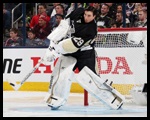|
I remember when I figured out that pay chart and what my wife would be earning... I was... happy. 
|
|
|
|

|
| # ? May 10, 2024 15:47 |
|
I've seen the charts before but didn't realize there was a locality adjustment added on top of that. Not bad. What is the CPC/TMC/TMS stand for? Fully certified through all 3 D bands at that facility or something else?
|
|
|
|
Boola posted:I've seen the charts before but didn't realize there was a locality adjustment added on top of that. Not bad. CPC is Certified Professional Controller, meaning you're fully certified through your facility or area. TMC and TMS are traffic management positions.
|
|
|
|
Wonder what changes they've made to the bio-q and if the people copying answers from others that passed last time will get through.
|
|
|
|
xaarman posted:First I'm hearing of this, any more details? I couldn't find the flight on the ground control frequency, probably because they weren't on that one either. The LiveATC recording doesn't capture the aircraft's runway exiting instructions (if there were any) so I can't tell why they would have thought it was ok to taxi across that runway. Still up in the air as far as I know. Just something else I remembered while browsing through FAA.gov. Here's a database of air traffic operations that you can search using many different criteria like specific facilities or dates. This might give you an idea of how busy a certain facility is, at least compared to other. http://www.faa.gov/news/media_resources/ATADSguide/ The Ferret King fucked around with this message at 18:40 on Jan 21, 2015 |
|
|
|
New Bid Out Have to have 52 weeks of certified experience.
|
|
|
|
fknlo posted:New Bid Out BUT! quote:NOTE-If you do not have a minimum of 52 weeks of certified air traffic control experience you will NOT qualify under this announcement. We hope you will instead consider applying for an announcement for entry-level ATCS trainees currently scheduled to be issued in March 2015. 
|
|
|
|
My area just got another transfer, this time with fourteen years as a CPC. ...Which makes him #3 on the seniority list. I'm going to be Wednesday/Thursday until the heat death of the universe.
|
|
|
|
MrYenko posted:My area just got another transfer, this time with fourteen years as a CPC.  #3 with only 14 years in?
|
|
|
|
fknlo posted:
Technically #5, but we have two that are going to be forced out before the end of the year, well before the new guy will get checked out. In a history of the FAA, right next to "staffing issues resulting from the strike, resonating through the organization for decades," will be a picture of our area.
|
|
|
|
fknlo posted:
Holy poo poo my thoughts exactly.
|
|
|
|
What are the options for voice communications with aircraft that are in the middle of the Atlantic Ocean (on a route from Paris to NYC for example)? My understanding is that there is some VHF coverage when near land and at high altitudes, but it would mostly be HF radio when far from land. Is there a minimum altitude at which HF is reliable?
|
|
|
|
Tommy 2.0 posted:Holy poo poo my thoughts exactly. I haven't actually tried to figure it out because I don't really care, but I think it's possible that I could never even make top 10 in seniority before I'm forced out due to being almost 30 when I started.
|
|
|
|
DNova posted:What are the options for voice communications with aircraft that are in the middle of the Atlantic Ocean (on a route from Paris to NYC for example)? So that's actually my job, HF radio operator for the Atlantic and Caribbean. No vhf except for 200DME from Bermuda and along the coast. HF is reliable at all altitudes above 15000 feet, never worked anyone below that.
|
|
|
|
two_beer_bishes posted:So that's actually my job, HF radio operator for the Atlantic and Caribbean. No vhf except for 200DME from Bermuda and along the coast. HF is reliable at all altitudes above 15000 feet, never worked anyone below that. Thanks very much!
|
|
|
|
fknlo posted:I haven't actually tried to figure it out because I don't really care, but I think it's possible that I could never even make top 10 in seniority before I'm forced out due to being almost 30 when I started. I'm in essentially the same situation.
|
|
|
|
How do you go about looking into Flight Service Stations careers? I do dispatch for trains already, but I prefer aviation and I think it sounds ideal.
|
|
|
|
Abu Dave posted:How do you go about looking into Flight Service Stations careers? I do dispatch for trains already, but I prefer aviation and I think it sounds ideal. Good luck with that. They're seriously looking at shutting them down and having pilots call us for their clearances. Because that will be fun.
|
|
|
|
Aw that sucks. Thanks.
|
|
|
|
Boy it's good money if you can keep the job a while though. I have two coworkers that started in flight service and they made 6 figures in their early 20s. Very likely they would have been laid off by now, but while it lasts it's a good gig if you can be responsible with your cash.
|
|
|
|
The Ferret King posted:Boy it's good money if you can keep the job a while though. I have two coworkers that started in flight service and they made 6 figures in their early 20s. Yeah, I wasn't trying to discourage you from looking into it, just be aware that it's probably not going to last. I imagine it's probably fairly competitive to get the few jobs they still have left as well.
|
|
|
|
Lockheed Martin presently holds the Flight Service contract. I looked at their jobs website and didn't see any openings but I expect that's where you start.
|
|
|
|
Cool thanks. I'll keep a eye open on it.
|
|
|
|
NATCA just posted a write-up of an ATC save at Miami International Airport.quote:Quick communication between two controllers at Miami Tower (MIA) last fall kept two pilots of commercial jets from continuing on a potential collision course.
|
|
|
|
The article mentions the Airport Surface Detection Equipment (ASDE-X at many facilities) which I realize I haven't covered in this thread: Airport Surface Detection Equipment  ASDE-X is a radar system that tracks aircraft movement on the surface of the airport, and airborne targets at a very very close range to the airport. It will detect aircraft both with or without transponders, and provide tower controllers a bird's eye view of the airport surface and all things moving on it. Additionally, there are safety logic systems built into the ASDE-X that will warn of an impending conflict between aircraft operating on or near the runways. Without this system, tower controllers rely entirely on their eyeballs to work aircraft on the airport surface itself. ASDE-X allows controllers to continue a fairly normal ground operation even when visibility from the tower is 0. Normally, aircraft that are observed on terminal radar systems are not visible to controllers on the radar screens until they're at least a hundred feet off the ground (for departures), or they drop off the radar screen when very close to the airport (for arrivals). This happens even when the terminal radar antenna is located right at the airport! This is not because the antenna CAN'T see these airplanes, mind you, but because software filters eventually exclude those airplanes to keep other ground clutter from obstructing the radar presentation, like highway vehicle traffic, trees, buildings, etc. ASDE-X continues this radar coverage all the way to the surface, enhancing situational awareness. The controller's utilize ASDE-X from a different display than the tower's main approach radar displays:  ASDE-X fuses radar input from a variety of sources. Primarily, the ASDE-X has its own antenna located at the top of the control tower. It usually looks like a white spinning disc or some sort of nautical antenna. It may be encapsulated by a radome that prevents you from seeing its movement:  It also takes input from the terminal radar antenna, nearby ADSB (a newer type of transponder based surveillance) antennas, and multilateration antennas, which are located on the airport and provide triangulation support for the main ASDE antenna:  A very small image of a multilateration antenna These systems are present at the largest airports in the U.S. I've never worked at an airport that has one. The ASDE-X significantly improves ground operation efficiency and situational awareness. Additionally, the safety logic system built into it allows application of some ATC rules that are otherwise unavailable to controllers working without the system (the rules are too boring to explain unless you really really wanna know). The Ferret King fucked around with this message at 13:32 on Jan 30, 2015 |
|
|
|
Any of you CPCs going to the safety conference coming up in Vegas?
|
|
|
|
Krime posted:Any of you CPCs going to the safety conference coming up in Vegas? Nope! I'll probably start doing more of that stuff over the next few years? How many years until the windows of the tower have a "futuristic" display that shows who/what each aircraft is? Seems like the logical way to go with everything.
|
|
|
|
fknlo posted:Nope! I'll probably start doing more of that stuff over the next few years? I've dreamed of a Tower HUD for so long...
|
|
|
|
fknlo posted:How many years until the windows of the tower have a "futuristic" display that shows who/what each aircraft is? Seems like the logical way to go with everything. Maybe not on the window glass itself, but this kinda thing is being done with remotely controlled towers: https://www.youtube.com/watch?v=Gqv8EECMXJM (object tracking shown at about 2:00)
|
|
|
|
R school date! February 23rd. Yaaaaaaaay map drawing.
|
|
|
|
MrYenko posted:R school date! So you've previously been working/training on D side operations, which I think is short for "data?" Is that right? So you're assisting the controller who sits in front of the radar scope and works the radar operation by answering landlines, making flight plan amendments and keeping an eye out for conflicted routings? How often, in your experience, is the D-side a split position vs. how often all of it is just worked combined by the radar controller? I ask because I wonder, when I call center for operational requests, am I taking the attention of the radar operator or a d-side operator? Of course when you call us approach controls, unless we're slammed an have a coordinator assisting (almost never), the person you're calling is the same guy who's talking to the airplanes. We have some positions at Corpus where landline communication can be a huge workload factor for us.
|
|
|
|
A D-sides formal title is "Assistant Radar Controller." I've been certified on all operational D positions in my area since July, and just waiting. We do all sorts of coordination for the R side, from answering the landlines, making pointouts, performing Approval Requests, etc, to answering override calls from other sectors, to talking to the supervisor, really anything to allow the R side to focus on airplanes. We perform our own traffic scan, and are expected to perform most of these things without the R side even having to ask, and instead just telling the radar controller what we've done. The more important (and for my area, far less common, since we don't have very much non-radar traffic, and our sectorization eliminates the most egregious conflicts during normal operations,) part of our job is non-radar separation, which includes departures from non-towered airports, and towered airports without radar services. We also ensure separation between traffic that is coming to us and traffic we already have, and additionally, a good D side is also continually performing his A side duties and checking routes on proposals, to ensure that the R side's workload stays low. It's a poo poo ton easier to have the Clearance Delivery guy issue an amendment than it is to give it to him during the eight minutes he's in your airspace, while you're doing seven-hundred other things. My area primarily works departures, in a nearly 100% radar environment, so D side duties can obviously vary enormously. Our Ocean area D-sides have significantly more actual separation responsibility, just due to the nature of their airspace. As to who you're calling - there really isn't any way to tell, short of asking, since we don't generally differentiate or identify ourselves when talking to other facilities. In fact, it's entirely possible that you're talking to the R side, even though his D side is staffed, because the D side is occupied with something else. It's a very dynamic work-share. If say that for our area, and depending on the sector (our ultra-high, called Sebring, rarely has a D side, same with the lower half of Lakeland,) there's a D-side on position about 50-60% percent of the time, but it's often a trainee, and probably only 20-30% of the time is the position staffed because of workload. We also have a third radar position, called a tracker. During extremely heavy traffic, the R side will stand up, behind the tracker, who takes the radar controller's seat, and plugs in at the radar console. The Voice Control System splits the tracker off onto the R-side's landlines, and the R-side simply scans, and talks to airplanes. All R-side data entry is performed by the tracker, who is doing a scan of his own, double checking the radar controller. The tracker position can also be staffed without a D side, primarily for tracker training, which is required for radar certification on that sector. Again, though, when talking to another facility, the tracker doesn't identify himself as such, so it really isn't possible to know, unless you ask.
|
|
|
|
I didn't even know about the tracker position. Wasn't really familiar with what A side was either. Thanks for that.
|
|
|
|
MrYenko posted:
I legit hate doing it like this. I as the R side am going to stay sitting down and the tracker can stand behind me. It's retarded to do it the other way. Give me extra set of eyes and I'm happy.
|
|
|
|
fknlo posted:I legit hate doing it like this. I as the R side am going to stay sitting down and the tracker can stand behind me. It's retarded to do it the other way. Give me extra set of eyes and I'm happy. It doesn't make any sense to me, either. I feel like your method would be more effective. (Several people in my area do it that way, as well.)
|
|
|
|
Yeah, that method would be more consistent with how we staff a coordinator during heavy traffic. The coordinator doesn't plug in to the same station as the radar controller. The coordinator plugs into a station adjacent to, or above the controller's station (we have two mounted on the overhead panel of the radar consoles. The radar controller stays put.
|
|
|
|
MrYenko posted:It doesn't make any sense to me, either. I feel like your method would be more effective. (Several people in my area do it that way, as well.) It makes it so much easier. Having the guy sitting down doing all the entries while also doing other things doesn't work. His scan is going to be in a completely different place, trying to work with someone else's settings, having to do other things while trying to keep up with keyboard entries basically being dictated by someone else, etc... I don't know how that became the standard practice of doing it.
|
|
|
|
Maybe a holdover from more primitive radar stations that didn't have individual preference settings?
|
|
|
|
Warning: The following link contains a dangerous amount of stupid: http://www.msn.com/en-us/news/video/cockpit-audio-from-jetblues-near-miss-with-plane/vi-AA8OwRK?refvid=AA8FNNL Also, Since JetBlue names all their airplanes they need to name the next one "Deborah."
|
|
|
|
|

|
| # ? May 10, 2024 15:47 |
|
KodiakRS posted:Warning: The following link contains a dangerous amount of stupid: Too bad JetBlue can't sue the stupidity or sensationalism out of CNN. Their 'expert' using the word "dissention" instead of descent Their transcription was god awful and just how exactly do they think anyone on a flight is going to hear a real TCAS alarm, which that obviously wasn't. On right, the "think" part is the problem here, they don't.
|
|
|























